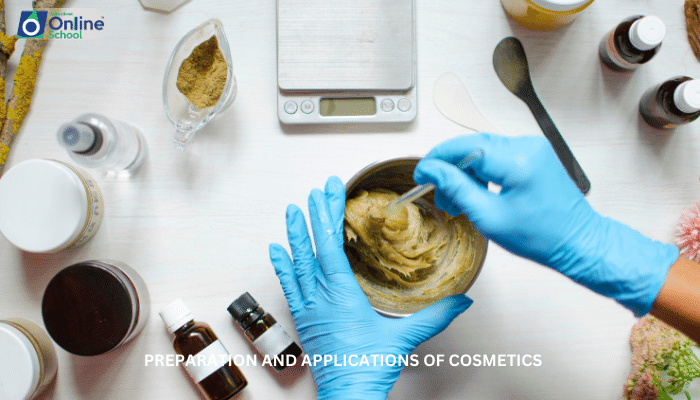
Learning Outcomes
By the end of this lesson, students should be able to:
i. Define the term cosmetics and identify the different categories of cosmetic products.
ii. Explain the basic principles of cosmetic formulation, considering factors such as compatibility, stability, and safety.
iii. Describe the preparation of nail varnish, highlighting the role of nitrocellulose, resins, and pigments in creating a durable and colorful coating.
iv. Explain the composition and mechanism of action of nail polish remover, emphasizing the role of solvents, such as acetone, in dissolving the nail varnish.
v. Discuss the preparation of lipsticks, considering the role of waxes, oils, pigments, and fragrances in creating a smooth, long-lasting, and appealing product.
vi. Recognize the diverse applications of cosmetics in enhancing appearance and promoting personal expression.
vii. Appreciate the importance of safety considerations and regulatory guidelines in the cosmetic industry.
Introduction
Cosmetics, products intended to enhance or alter the appearance of the face and body, have been used for centuries, playing a significant role in personal expression and self-care. This lesson delves into the fascinating world of cosmetic chemistry, exploring the preparation and applications of various cosmetic products.
i. Nail Varnish: A Touch of Color and Protection
Nail varnish, a popular cosmetic product used to color and protect fingernails, is composed of a complex blend of ingredients:
Nitrocellulose: The primary film-forming agent that provides the varnish with its durable and hard-wearing properties.
Resins: Polymers that enhance the adhesion and flexibility of the varnish, ensuring it adheres well to the nail surface and resists cracking or chipping.
Pigments: Finely ground particles that provide the varnish with its color. Organic pigments, such as phthalocyanines and azo dyes, are commonly used.
Solvents: Liquids that dissolve the nitrocellulose, resins, and pigments, allowing them to spread evenly on the nail and form a smooth film upon evaporation.
ii. Nail Polish Remover: Dissolving the Glamorous Coat
Nail polish remover, an essential companion to nail varnish, contains solvents that effectively dissolve the varnish and allow it to be removed from the nails. Acetone, a powerful solvent, is a common ingredient in nail polish remover.
Acetone: The primary solvent in most nail polish removers, effectively dissolves nitrocellulose and resins, allowing the varnish to be removed.
Other Solvents: Additional solvents, such as ethyl acetate and alcohol, may be added to enhance the dissolving power and reduce the harshness of acetone.
Fragrances: Fragrances are often added to mask the strong odor of solvents and provide a pleasant scent.
iii. Lipsticks: A Symphony of Color and Texture
Lipsticks, versatile cosmetic products that add color and definition to the lips, are composed of a blend of waxes, oils, pigments, and fragrances:
Waxes: Mixtures of long-chain hydrocarbons that provide the lipstick with its solid form and contribute to its smooth application and long-lasting wear.
Oils: Emollients that soften and moisturize the lips, providing a smooth and comfortable feel.
Pigments: Finely ground particles that impart color to the lipstick. Organic and inorganic pigments are used, offering a wide range of colors and finishes.
Fragrances: Fragrances are often added to enhance the sensory appeal and provide a pleasant scent.
Cosmetics, a blend of art and science, have transformed the way we enhance our appearance and express ourselves. Understanding the preparation and applications of various cosmetic products, such as nail varnish, nail polish remover, and lipsticks, provides a glimpse into the fascinating world of cosmetic chemistry. As the demand for safe and effective cosmetic products increases, advancements in cosmetic science will continue to shape the future of cosmetics.